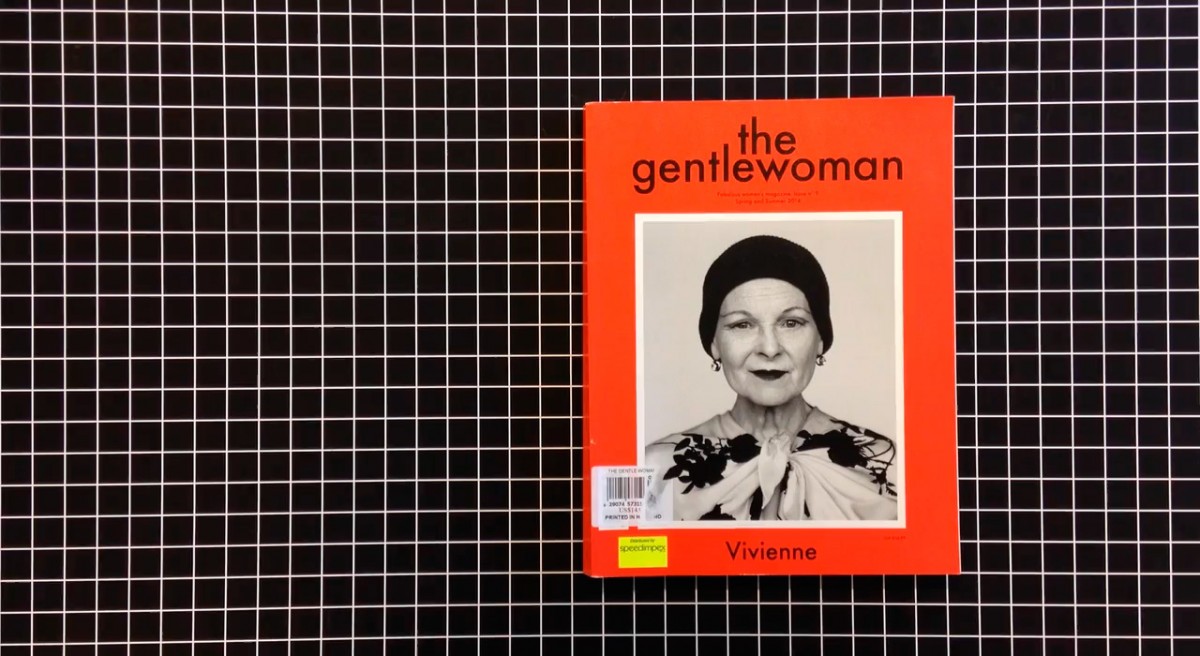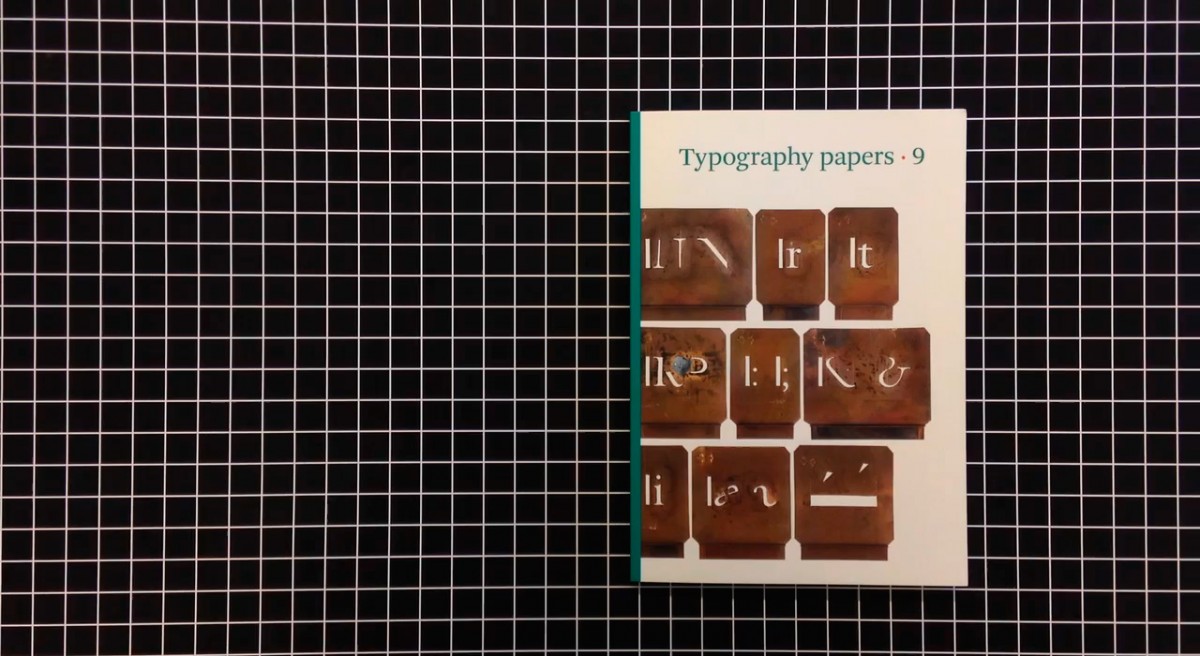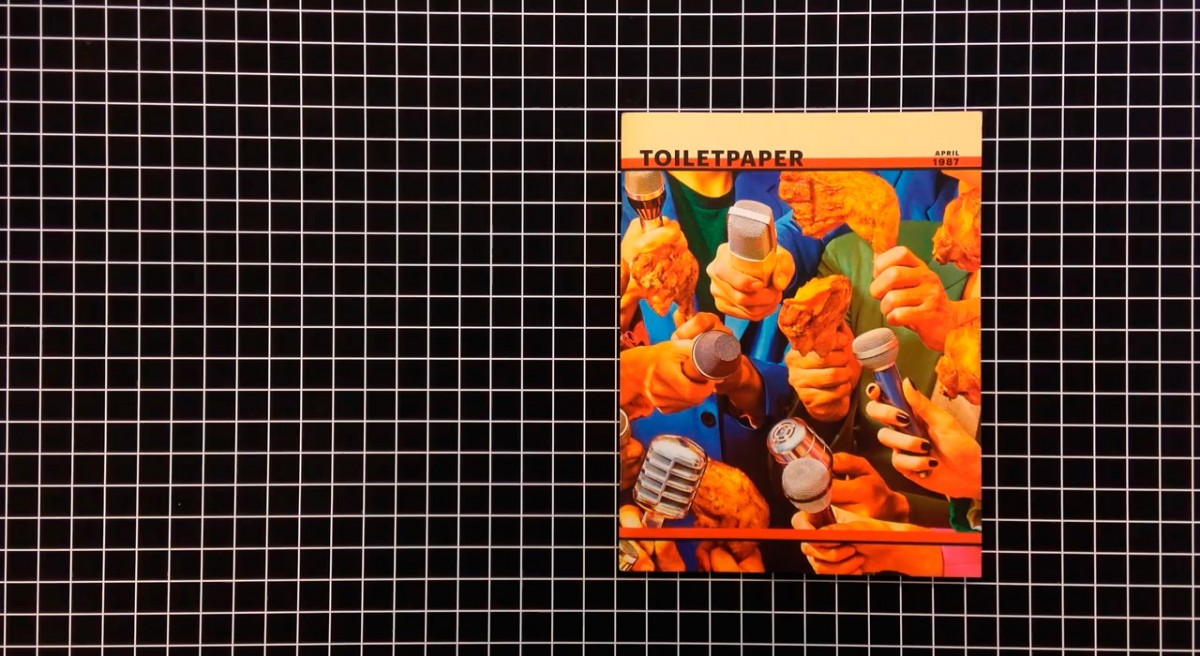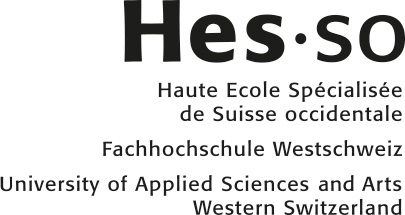Further Reading
A collection of digital publishing references.
- App
- Browser
- Color
- Communication
- Cover
- Design
- Digital
- Emoji
- Exhibition
- Graphic Design
- History
- Internet
- Magazine
- Motion
- Navigation
- Photography
- Programming
- Typography
- UI
- UX
- Virus
- Visuals
- VR
- Web Design
- Wireframe
A Communication Primer
youtube.com
An instructional film on the basics of communication, created by Charles and Ray Eames of Eames Office for IBM.
A Handmade Web
luckysoap.com
‘handmade web’ to refer to web pages coded by hand rather than by software…
A List Apart — Design (ongoing)
alistapart.com
A List Apart explores the design, development, and meaning of web content, with a special focus on web standards and best practices.
Abstract Browsing
itsnicethat.com
Digital artist Rafaël Rozendaal is turning the internet inside out with an exhibition at Steve Turner Los Angeles.
As We May Think
theatlantic.com
As Director of the Office of Scientific Research and Development, Dr. Vannevar Bush has coordinated the activities of some six thousand leading American scientists in the application of science to warfare.
Balsamiq Mockups App
balsamiq.com
Balsamiq Mockups is a rapid wireframing tool that helps you Work Faster & Smarter. It reproduces the experience of sketching on a whiteboard, but using a computer.
Making mockups is fast. You’ll generate more ideas, so you can throw out the bad ones and discover the best solutions.
Between Analog and Digital
aperture.org
A conversation between Photographer Jason Evans and musician Keiran Hebden (a.k.a. Four Tet). They share a fascination with utilizing both old and new technologies in their creative lives.
ℂ◉℗⒴ ℘ⓐṨͲℰ Ⓒℌ◭ℝ◬ℂ⒯℮ℛ
copypastecharacter.com
A web and iPhone application for copying the ‘hidden’ characters that comes with the computer’s typefaces, to be pasted into emails, tweets, text documents, forums and whatever else you might need to spice up with an extra ♔, ฿ or, ❒.
Color Library
colorlibrary.ch
“Color Library” is a database of color profiles for artists, designers and printers who are looking for a novel yet professional color management solution. These new tools can convert images for printing devices using two, three, four or five spot colors. It offers a large variety of combinations, from basic colors to metallics, neons and pastels.
Computer Virus Catalog
computerviruscatalog.com
They steal our files, corrupt our hard drives and destroy our lives. We scan. We block. Do everything we can to prevent infection. Computer viruses. We hate ’em. Nevertheless, we remain fascinated by their evil plots. This fascination led to a new kind of art collection – Computer Virus Catalog. The worst viruses in computer history interpreted by artists around the world.
Founded & curated by Bas van de Poel
COS Magazine #16
magculture.com
“With client magazines, the true test of their worth is in determining whether the brand’s identity has been properly extended and translated into the printed format.” By Jeremie Leslie
Cybertext: Perspectives on Ergodic Literature
In Cybertext Espen Aarseth explores the aesthetics and textual dynamics of digital literature and its diverse genres, including hypertext fiction, computer games, computer-generated poetry and prose, etc.
Declarative Design Tools
jon.gold
Our brains and computers are fast; our hands, mice and keyboards are slow.
Designing Media
designing-media.com
In Designing Media, design guru Bill Moggridge examines connections and conflicts between old and new media, describing how the MSM have changed and how new patterns of media consumption are emerging.
Designing the Editorial Experience
editorialexperience.com
This book, which developed from the experiences of the authors at RES magazine, provides an introduction to the basics of graphic and digital design.
Device-Independent Design Strategy
smashingmagazine.com
With all the talk about responsive Web design, designers and coders are moving even further from the fixed pixel layouts of design’s print-based history.
Ecal Typefaces
ecal-typefaces.ch
ECAL launches an online foundry in association with Swiss Typefaces. The website features typefaces designed by Bachelor Graphic Design and Master Art Direction students.
EINS EINS EINS
eins-eins-eins-magazin.de
Webarchive for Magazines. The aim to look after and share this archive, is not to make the market completely accesible but rather we want to create an overview and show the relationship between the magazines themselves and their editors and art directors.
Eloquent JavaScript
eloquentjavascript.net
This is a book about JavaScript, programming, and the wonders of the digital.
Google boss warns of ‘forgotten century’ with email and photos at risk
theguardian.com
Digital material including key historical documents could be lost forever because programs to view them will become defunct, says Vint Cerf. By Ian Sample
Google Design
design.google.com
Google Design is a cooperative effort led by a group of designers, developers, writers, and UX advocates at Google whose goal is to capture and share their work and ideas with the user.
How Browsers Work: Behind the scenes of modern web browsers
html5rocks.com
This comprehensive primer on the internal operations of WebKit and Gecko is the result of much research done by Israeli developer Tali Garsiel. Over a few years, she reviewed all the published data about browser internals (see Resources) and spent a lot of time reading web browser source code.
Hybrid Publishing Lab
hybridpublishing.org
In collaboration with publishers, librarians, software developers, and authors Hybrid Publishing is a lab that engages with new concepts and technologies in digital publishing with a particular focus on the humanities. Embedding its research results in economic contexts, for example by setting up a Hybrid Publishing Consortium to consult about Open Source software solutions, the Lab both carries out applied experiments in publishing as well as incubating new businesses. Central for the lab’s projects is the idea of Open Access regarding academic knowledge, research, and education as well as a strong curiosity about new business models in a disruptive digital environment.
Interview with MagCulture’s Jeremy Leslie on Independent Publishing
subtraction.com
Interview with Tom Krcha, Adobe XD
subtraction.com
Adobe released the first public preview of what the company is now calling Adobe XD, its their major new UX/UI design and prototyping tool.
It’s Nice That: Interview with fltr
itsnicethat.com
Read an interview with the editor of mobile photography magazine fltr on It’s Nice That.
Lava — Voice of a Magazine
typotheque.com
“In Spring 2012 I started working on Works That Work, a new magazine which launched in February 2013, and as strange as it may seem, one of the first things that I started working on was its typeface.” Peter Biľak
Layout in Flipboard
engineering.flipboard.com
Flipboard Pages, a layout engine that turns web page articles into magazine pages for the iPad.
Lined and Unlined
linedandunlined.com
A filing cabinet by Rob Giampietro about his researches on the relationship of movement to interaction, the history of visual identity and branding in the arts, and the future of the museum in the digital age.
Live Font Interpolation on the Web
alistapart.com
“We all want to design great typographic experiences. We also want to serve users on an increasing range of devices and contexts. But today’s webfonts tie our responsive sites and applications to inflexible type that doesn’t scale. As a result, our users get poor reading experiences and longer loading times from additional font weights.” by Andrew Johnson
Monoskop
monoskop.org
Monoskop is a wiki for collaborative studies of the arts, media and humanities.
New Yorker cover comes to life
itsnicethat.com
Malika Favre’s illustration for this week’s New Yorker magazine has been brought to life by French animator Mathieu Maillefer.
On Photography
susansontag.com
Humankind lingers unregenerately in Plato’s cave, still reveling, its age-old habit, in mere images of the truth. But being educated by photographs is not like being educated by older, more artisanal images. For one thing, there are a great many more images around, claiming our attention. By Susan Sontag
Once it’s Typed, it’s Published
dextersinister.org
“Allen Fischer has asked me to supply a list of my recent writings and to describe my attempts to publish them using new media such as microfiches and xerox”. By J Christopher Jones
Post-Digital Publishing Archive
p-dpa.net
The aim of P—DPA is to systematically collect, organize and keep trace of experiences in the fields of art and design that explore the relationships between publishing and digital technology.
Resilient web design
resilientwebdesign.com
Resilient Web Design, you might think that this is a handbook for designing robust websites. This is not a handbook. It’s more like a history book.
Roger That: Emoji Overdrive
ia.net
A font that turns the 2,000 most used English words into emoji.
Scrolling on the web: A primer
blogs.windows.com
Scrolling is one of the oldest interactions on the web. Long before we had pull-to-refresh or infinite-loading lists, the humble scrollbar solved the web’s original scaling problem: how can we interact with content that’s stretched beyond the available viewport?
Swiss in CSS
swissincss.com
Swiss in CSS is a homage to the International Typographic Style and the designers that pioneered the ideas behind the influential design movement.
The Box Model
learn.shayhowe.com
… Now we’re going to go a bit deeper and look at exactly how elements are displayed on a page and how they are sized.
The Death of homepages
theatlantic.com
News publishers lost the homepage firehose, and gained a social media flood. It’s making the news more about readers, and less about news. By Derek Thompson
The Electric Information Age Book
brainpickings.org
Review of the book exploring how McLuhan, Agel, and Fiore Created a New Visual Vernacular for the Information Age. By Maria Popova
The Future of Browser History
medium.freecodecamp.com
About browsers history, and how we tend to browse nowadays.
The Future of the Books looks a lot like Netflix
wired.com
Struggling against plunging prices and a shrinking audience, book publishers think they’ve found a compelling vision for the future: magazines.
The leaked New York Times innovation report
niemanlab.org
“It’s an astonishing look inside the cultural change still needed in the shift to digital — even in one of the world’s greatest newsrooms.” by Joshua Benton
The Modern Magazine: Visual Journalism in the Digital Era
shop.magculture.com
The book describes how the disruption of the digital era has opened up new possibilities, forcing editors and designers to rethink their roles and their publications. By Jeremy Leslie
The New Yorker unveils its first animated gif cover
theguardian.com
Magazine’s art director stresses animation by Christoph Niemann of traffic in the rain is not a “technical gimmick.”
The Web Is Dead.
wired.com
Two decades after its birth, the World Wide Web is in decline, as simpler, sleeker services — think apps — are less about the searching and more about the getting. Chris Anderson explains how this new paradigm reflects the inevitable course of capitalism. And Michael Wolff explains why the new breed of media titan is forsaking the Web for more promising (and profitable) pastures.
The Web Time Forgot
nytimes.com
In 1934, Paut Otlet sketched out plans for a global network of computers (called “electric telescopes”) where “anyone in his armchair would be able to contemplate the whole of creation”, By Alex Wright
Too Much World: Is the Internet Dead?
e-flux.com
Is the internet dead? This is not a metaphorical question. It asks what happened to the internet after it stopped being a possibility. By Hito Steyerl
Typeface As Programme: Glossary
typotheque.com
A glossary of tools and technologies mentioned in Typeface As Programme.
by Jürg Lehni
Typography for User Interfaces
viljamis.com
A recap of how far type in UI has come, where it’s going (VR) and what to look for when choosing a workhorse for your next interface. (via Atomic.io)
Use Your Interface
uyi.io
UYI, is a place documenting the uprising of motion based interface patterns.
Using Computer Modern on the web
checkmyworking.com
Computer Modern is the family of typefaces developed by Donald Knuth for TeX. It’s so good-looking that some scientists do research just so they can write it up in Computer Modern.
vvatch.tv
vvatch.tv
Stop searching, start vvatching. →
Coming soon: An easy, fun way to curate and collectively
vvatch streaming channels of the internet’s best videos.
Words Without Pictures
art.buffalo.edu
Words Without Pictures was conceived of by curator Charlotte Cotton and artist Alex Klein to create spaces for thoughtful discourse around current issues in photography.
Writing Space: Computers, Hypertext, and the Remediation of Print
Reflecting the dynamic changes in electronic technology since the first edition, this revision incorporates the Web and other current standards of electronic writing. By J. David Bolter.
 Copy and ? Paste Emoji ?
Copy and ? Paste Emoji ?





